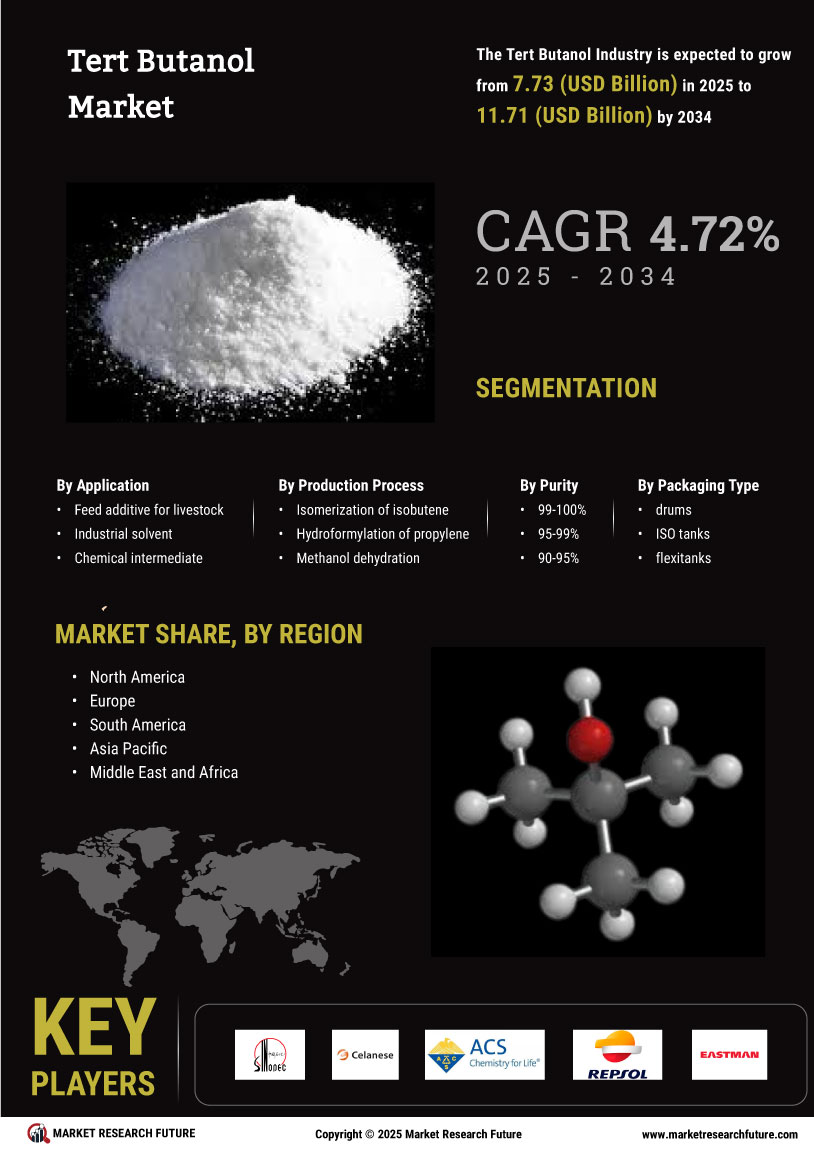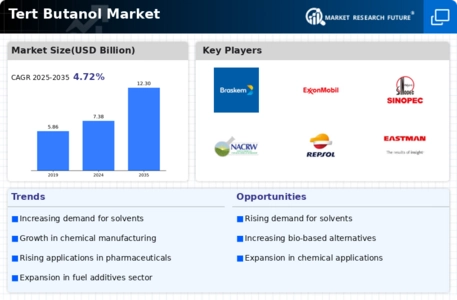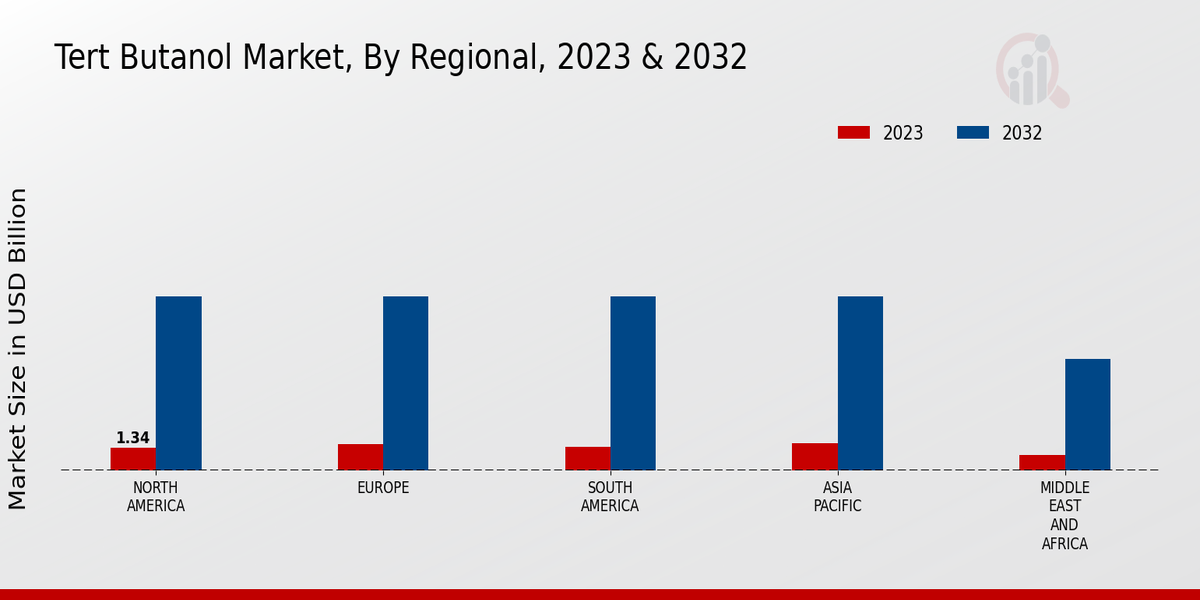Market Growth Projections
The Global Tert Butanol Market Industry is projected to experience substantial growth over the coming years. With an estimated market value of 7.38 USD Billion in 2024, the industry is poised for a significant increase, potentially reaching 12.3 USD Billion by 2035. This growth trajectory suggests a compound annual growth rate (CAGR) of 4.72% from 2025 to 2035. Various factors, including rising demand in chemical manufacturing, automotive applications, and pharmaceutical uses, are likely to contribute to this expansion. The market's evolution reflects broader trends in sustainability and technological advancements, positioning tert butanol as a key player in the global chemical landscape.
Growth in Automotive Sector
The automotive sector significantly influences the Global Tert Butanol Market Industry, as tert butanol is utilized in the production of fuel additives and coatings. The increasing production of vehicles, particularly in emerging economies, is likely to drive the demand for tert butanol. As manufacturers seek to enhance fuel efficiency and reduce emissions, the incorporation of tert butanol in fuel formulations appears to be a viable solution. This trend is expected to contribute to the overall market growth, with a projected CAGR of 4.72% from 2025 to 2035, underscoring the automotive industry's pivotal role in shaping the tert butanol landscape.
Regulatory Support for Green Chemistry
Regulatory frameworks promoting green chemistry practices are influencing the Global Tert Butanol Market Industry positively. Governments worldwide are encouraging the use of sustainable solvents, and tert butanol, being a relatively eco-friendly option, is gaining traction. This regulatory support is likely to drive innovation and investment in tert butanol production processes, aligning with global sustainability goals. As industries adapt to these regulations, the demand for tert butanol may increase, further solidifying its position in the market. The anticipated growth trajectory suggests that the market could reach 12.3 USD Billion by 2035, reflecting the impact of these supportive measures.
Rising Demand in Chemical Manufacturing
The Global Tert Butanol Market Industry is experiencing a surge in demand driven by its extensive applications in chemical manufacturing. Tert butanol serves as a solvent and an intermediate in the production of various chemicals, including butyl acrylate and methyl methacrylate. As industries increasingly focus on producing high-quality chemicals, the need for tert butanol is projected to grow. In 2024, the market is valued at approximately 7.38 USD Billion, reflecting the growing reliance on this compound in diverse sectors. This trend is expected to continue, with the market potentially reaching 12.3 USD Billion by 2035, indicating a robust growth trajectory.
Expansion of Pharmaceutical Applications
The Global Tert Butanol Market Industry is witnessing an expansion in pharmaceutical applications, where tert butanol is used as a solvent and reagent in drug formulation. The increasing focus on research and development in the pharmaceutical sector is likely to enhance the demand for tert butanol, as it plays a crucial role in the synthesis of various active pharmaceutical ingredients. This trend is particularly relevant in regions with robust pharmaceutical manufacturing capabilities. As the market evolves, the pharmaceutical sector's growing reliance on tert butanol may significantly impact its overall demand, contributing to the industry's projected growth.
Technological Advancements in Production
Technological advancements in the production of tert butanol are shaping the Global Tert Butanol Market Industry. Innovations in production methods, such as more efficient catalytic processes, are likely to enhance yield and reduce costs. These advancements may enable manufacturers to meet the growing demand for tert butanol across various applications, from solvents to fuel additives. As production becomes more efficient, the market is expected to benefit from increased supply and potentially lower prices, which could stimulate further demand. This dynamic is crucial as the industry anticipates a CAGR of 4.72% from 2025 to 2035, indicating a promising future.






















Leave a Comment